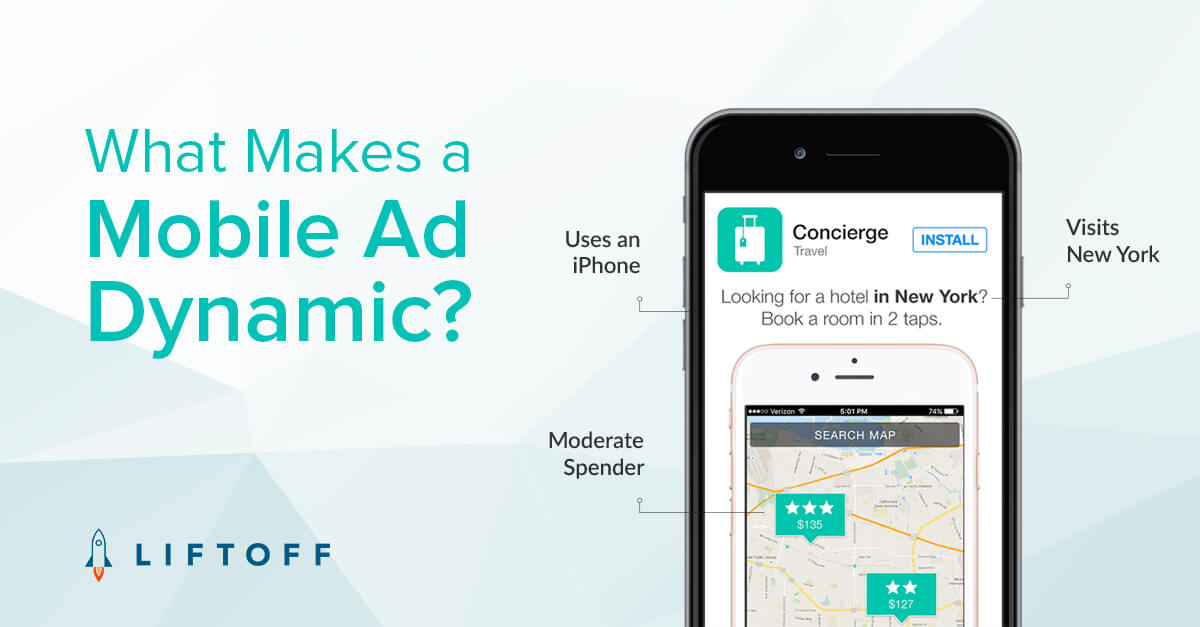The primary goal of mobile app marketing is to acquire users by getting people to notice and install your application. But in the age of “freemium” pricing models, it’s more important than ever to attract the right kind of people. These are the kinds of users who will go beyond their initial installation to spend money within your app. That makes generic, one-size-fits-all ads risky; it’s easy to blow through ad spend when you’re going for consumer quantity over quality.
Dynamic ads and programmatic ad buying have improved how app marketers can reach desirable audiences. Rather than paying for an ad placement ahead of time in the hopes it will catch users’ attention, marketers can now automatically assemble highly personalized ads in real time using advanced algorithms. This boosts efficiency by bypassing the clunky process of locking into static contracts with ad publishers. As State of Digital writes, “This way you are only paying for highly effective ads, delivered to the right people at the right time.”
Programmatic ad buying is sweeping the digital advertising landscape. For example, eMarketer predicts that over 85 percent of mobile digital display ads will be purchased programmatically by 2019. In fact, nearly eight of 10 mobile ads already are. When you combine these figures with the skyrocketing popularity of mobile apps in general, it’s readily apparent why modern marketers are keen to implement automated methods for ad buying.
Programmatic ad buying covers the how when it comes to effective mobile app marketing, but what exactly are marketers placing in front of consumers? If they want to increase post-install conversion rates by an average of 150 to 400 percent, they’ll need to utilize dynamic advertisements that are:
- Closely personalized to suit their target audience based on demographics, geographical location and device.
- Based on visually pleasing templates that prioritize the right information and visuals, whether it’s a banner, carousel, native ad or other format.
- Well-suited to whatever device on which they’re viewed.
- Created programmatically to save time and effort on the back-end.
Dynamic ads save marketers time because it’s no longer necessary to pull in designers to assemble many different versions of possible ads, then wait for an A/B testing period to end before drawing conclusions about which ad formats work the best. Eliminating the need for manual A/B tests means you can use the time and money you would have spent running trials on more important things.
Dynamic ads are also designed to reach potentially high-value customers—that is, those customers who match your app’s ideal target audience based on usage and personal characteristics. If you’ve had great success with female users aged 24-30 who live in large cities and use iPhones, then you’ll get better results serving your ads to likeminded consumers. These users have a higher chance of not only installing your application, but also engaging in post-install events like enrolling in a paid subscription plan, buying a product or making additional in-app purchases.
How can you put programmatic ad buying and dynamic ads to use for your app? Liftoff allows you to programmatically create dozens of dynamic ads based on an extensive database of lookalike target audience profiles. Learn more about what Liftoff’s mobile app marketing platform can do for your post-install conversion rates today!
